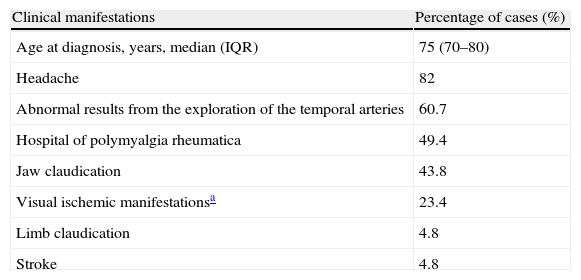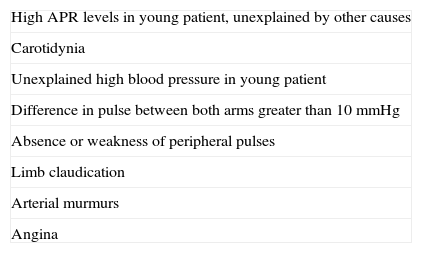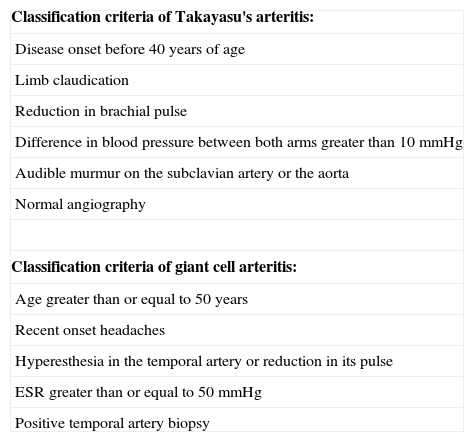The term large vessel vasculitides includes two distinct clinical entities: Takayasu's arteritis and giant cell arteritis. Takayasu's arteritis mainly affects children and women under 40 years, affecting the aorta and its major branches. Its incidence in Southern Europe is low. Giant cell arteritis is the most common vasculitis in those over 60. Its incidence in the European population is greater than that of Takayasu's arteritis. It mainly affects the extracranial vessels, especially those derived from the carotid artery. Both conditions are characterized by inflammation of the vessel wall, this causing structural damage and the expression of different clinical manifestations. The treatment of choice of both conditions is based on high-dose glucocorticoids associated, in some cases, to immunosuppressants. Biologic agents have been reserved for cases refractory to conventional therapies.
Las vasculitis de grandes vasos incluyen las arteritis de Takayasu y la de células gigantes. La arteritis de Takayasu afecta a niños y mujeres menores de 40 años, presenta una baja incidencia en el sur de Europa, y afecta principalmente a la aorta y sus ramas principales. La arteritis de células gigantes es la vasculitis más frecuente en los mayores de 60 años, con una incidencia mayor que la arteritis de Takayasu en la población europea. Afecta principalmente los vasos extracraneales, especialmente, los derivados de la carótida. Ambas entidades presentan inflamación a nivel de la pared vascular, lo que ocasiona el daño estructural y la expresión de un amplio espectro de manifestaciones clínicas. El tratamiento de elección de ambas entidades se basa en el uso de glucocorticoides a dosis elevadas asociados con frecuencia a inmunosupresores. La utilización de tratamientos biológicos se reservará para los casos refractarios al tratamiento convencional.
Article
Diríjase desde aquí a la web de la >>>FESEMI<<< e inicie sesión mediante el formulario que se encuentra en la barra superior, pulsando sobre el candado.

Una vez autentificado, en la misma web de FESEMI, en el menú superior, elija la opción deseada.

>>>FESEMI<<<










